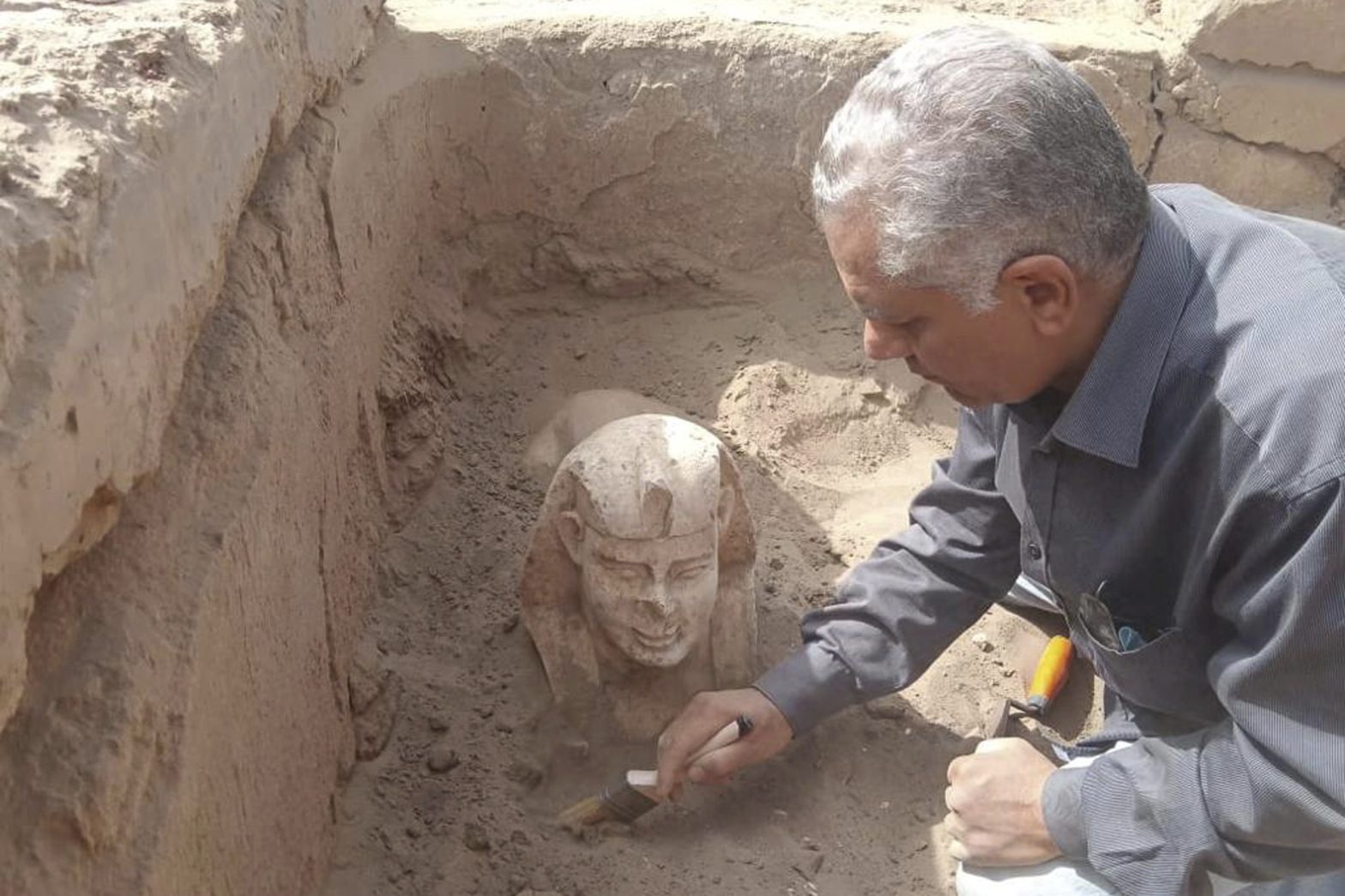
At an ancient temple in southern Egypt, archaeologists have uncovered a figure that is reminiscent of a sphinx, as well as the remnants of a shrine.
The Hathor Temple is one of the best preserved ancient locations in Egypt, and the recently unearthed artifacts are shedding fresh light on the extensive history of the surrounding area.
Smiley Face and Two Dimples
The limestone sphinx features a “smiley face and two dimples” and is believed to represent the Roman Emperor Claudius. It is significantly smaller than the famous Sphinx located in the Pyramids of Giza, which stands at a towering height of 20 meters (66 feet).
The artifacts were found inside a two-level tomb in the temple of Dendera in Qena Province, which is located approximately 450 kilometers (280 miles) south of Cairo, Egypt’s capital city.
Emperor Claudius ruled over Rome between 41 and 54 AD, and historians have long been interested in exploring the Roman Empire’s influence in North Africa. Archaeologists are now studying the markings on the stone slab to learn more about the statue’s identity and significance.
Discovery of Different Artifacts
The discovery of the sphinx is a significant finding that provides further insight into the complex and interconnected history of ancient Egypt and Rome.
In addition to the sphinx, archaeologists also found a Roman-era stone slab with demotic and hieroglyphic inscriptions. The inscriptions provide further clues about the Roman Empire’s presence in the region and offer insight into the complex relationships that existed between ancient cultures.
The limestone shrine, which was discovered alongside the sphinx and the stone slab, includes a two-layer platform and a mud-brick basin from the Byzantine era. The Byzantine Empire, which ruled over Egypt for several centuries, was known for its impressive architectural feats and intricate mosaics.
Smiley, dimpled sphinx statue unearthed in Egypt.
The dimpled sphinx was found near the Hathor Temple, where the famed Dendera Zodiac had been discovered pic.twitter.com/LfGY2i4326— filip (@FilipMili4) March 6, 2023
The discovery of the shrine provides further insight into the Byzantine Empire’s presence in the region and its impact on local culture and architecture.
However, some experts believe that the Egyptian government’s discovery of these artifacts may be driven by a desire to attract more tourists to the region.
Boost to Egypt’s Tourism Industry
Egypt has been struggling with an economic crisis in recent years, and the country’s tourism industry has been hit hard. In response, the government has been taking steps to attract more visitors to the country, including investing in new tourism infrastructure and promoting the country’s rich cultural heritage.
The discovery of the sphinx, the stone slab, and the shrine is likely to generate significant interest among tourists and historians alike. Visitors to the region will be able to explore the ancient temple of Dendera and learn more about the rich history of this part of Egypt.
The artifacts will also provide a valuable resource for archaeologists and historians studying the region’s past, helping to deepen our understanding of the complex and interconnected history of ancient cultures.
See all the latest news from Greece and the world at Greekreporter.com. Contact our newsroom to report an update or send your story, photos and videos. Follow GR on Google News and subscribe here to our daily email!



